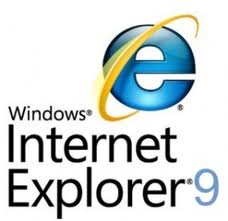Microsoft released Internet Explorer 9 late on 14 March 14 (or 15 March in Europe). For anyone who’s toyed around with the beta or Release Candidate, there’s nothing wholly unexpected in the browser’s final version.
The bigger question now is whether its features – including a stripped-down interface and fairly deep integration with Windows 7’s user interface – can entice users who would otherwise drift in the direction of Google Chrome and Firefox.
What is missing?
The first thing you notice about IE9 is its absences. With this release, Microsoft has stripped out from the interface pretty much everything nonessential to power users and reduced the size and prominence of the remaining widgets. This helps bring Web content front-and-center, and it also invites comparisons to Chrome and its similarly less-is-more design.
 In keeping with Microsoft’s recent focus on integrating its various software assets to work together, IE9’s most eye-popping features come in conjunction with Windows 7. These include the ability to drag-and-drop a Website tab to the Windows 7 taskbar, transforming it into an icon that can, when right-clicked, open up a “jump list” full of one-click links to that Website’s most vital content.
In keeping with Microsoft’s recent focus on integrating its various software assets to work together, IE9’s most eye-popping features come in conjunction with Windows 7. These include the ability to drag-and-drop a Website tab to the Windows 7 taskbar, transforming it into an icon that can, when right-clicked, open up a “jump list” full of one-click links to that Website’s most vital content.
Windows 7 users can also “Aero Snap” their browser windows to the left or right of the screen, which comes in handy when organizing multiple Websites or trying to view two Web pages side-by-side. I’ve played around with IE9 through multiple builds, on multiple PCs, and I’ve found that Aero Snap comes in particularly useful with a widescreen monitor; your own mileage, as always, may vary.
Fastest browser ever?
IE9 also leverages your PC’s GPU and CPU, along with a revamped JavaScript engine named Chakra, to help speedily render rich Web content. Whether benchmarks and independent testing support Microsoft’s claim that IE9 is their fastest browser ever, it certainly feels fast in practice, especially when displaying Websites thick with rich content.
IE9 might work great with Windows 7, but its incompatibility with Windows XP effectively shuts off a wide swath of users from downloading the browser. In turn, those users will either gravitate toward a rival, such as Firefox, or stick with one of the antiquated versions of Internet Explorer that Microsoft is trying so desperately to kill off.
Microsoft evidently hopes that Windows 7’s adoption will continue at a fast enough pace to prevent this from becoming a major issue, although with 55.09 percent of PCs still running XP (according to analytics firm Net Applications), it could be some time before it’s negated entirely.
IE9 is also compatible with Windows Vista, from which users are fleeing like first-class passengers from the Titanic.
This newest browser also comes with some nifty security features designed to assuage the paranoid and match its rivals’ capabilities. InPrivate Browsing allows for Web surfing without leaving any traces that can be discovered later. The baked-in SmartScreen Filter evaluates potentially suspect Websites based on their reputation and notifies the user accordingly with pop-up windows and lists of suggested actions. Tracking Protection lets users decide which types of information they want viewable by third parties.
Market share declining
IE9 hits the market at a somewhat odd time for Microsoft. According to Net Applications, the company’s share of the browser market currently stands at 56.77 percent, followed by Firefox at 21.74 percent, Google Chrome at 10.93 percent and Safari at 6.36 percent. For the Internet Explorer franchise, that represents a significant decline from the 68.46 percent it held in March 2009.
In other words, Microsoft is facing a slow but steady erosion in market share. Whether IE9 can help halt or even reverse that slide remains to be seen, but it’s definitely a browser capable of going toe-to-toe with the latest versions of its rivals.




